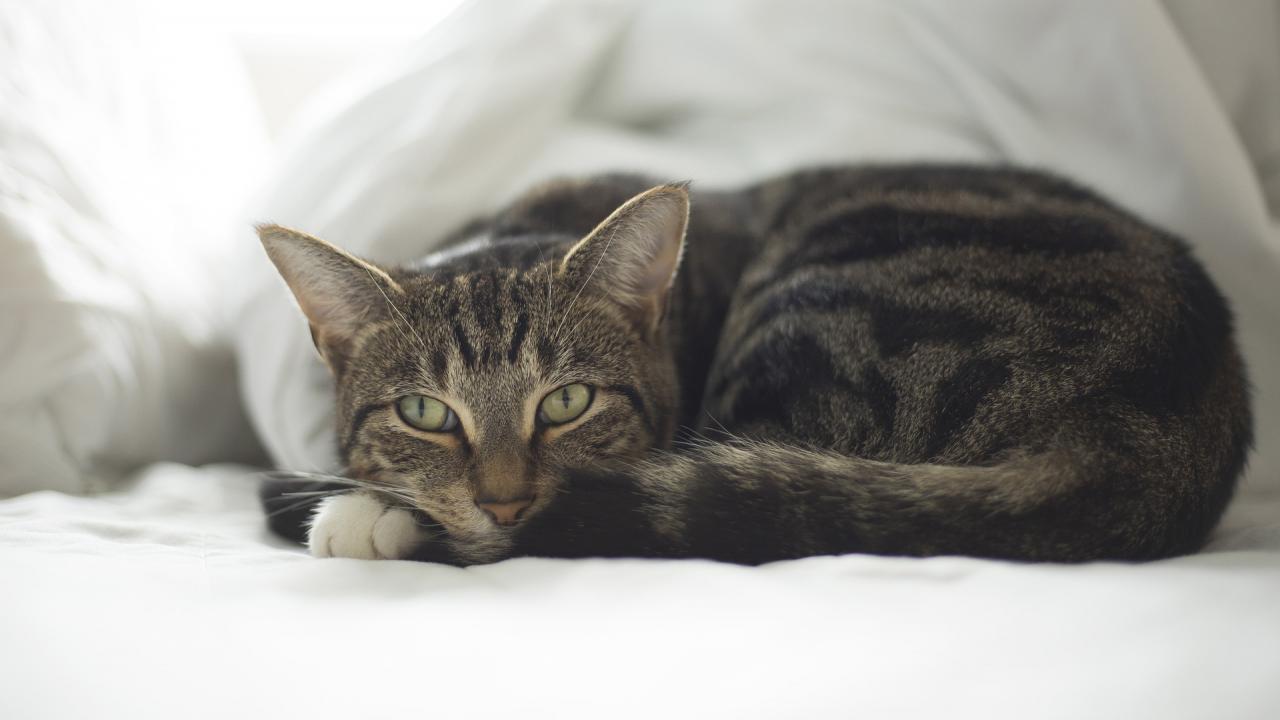
Feline Lower Urinary Tract Disease
What is feline lower urinary tract disease?
Takeaways
- Feline lower urinary tract disease (FLUTD) describes multiple conditions that can affect the bladder and urethra in cats.
- The diseases can include bladder stones, urinary tract infections, and rarely, bladder cancer. When a diagnosis cannot be clearly identified, we call this disease feline idiopathic cystitis (FIC).
- Most cats with FLUTD are young or middle-aged. Bladder cancer is most often diagnosed in much older cats. Indoor cats, and multi-cat households are reported risk factors for some FLUTD.
- Treatment varies depending on the underlying cause, but often includes environmental enrichment and dietary therapy.
- It is important to work closely with a veterinarian to discuss risk factors and tailor management strategies specific for your cat’s presenting problems.
Feline lower urinary tract disease (FLUTD) refers to various conditions that affect the bladder and urethra in cats. These diseases can include bladder stones, urinary tract infections, and rarely, bladder cancer. When a diagnosis cannot be clearly identified for a cat with lower urinary tract signs (LUTS), we call this disease feline idiopathic cystitis (FIC). Cats with FIC can present with urethral obstructions, which can be life threatening if not treated quickly. Most cats with FLUTD are young or middle-aged. Bladder cancer is most often diagnosed in much older cats. Indoor cats, and multi-cat households are reported risk factors for some FLUTD.
What are the clinical signs of feline lower urinary tract disease?
Clinical signs of the various FLUTD mentioned can include include straining to urinate (stranguria), voiding small amounts of urine frequently (pollakiuria) blood in the urine (hematuria), excessive licking of the hind quarters, urinating outside the litter box (periuria), pain while urinating (dysuria) and urethral obstruction.
How is feline lower urinary tract disease diagnosed?
Diagnostics for cats presenting with LUTS can include an abdominal x-ray to evaluate for the most common bladder stones such as struvite and calcium oxalate, a urine culture to evaluate for bacterial cystitis, and abdominal ultrasound to evaluate the bladder for mass lesions, stones and other anatomic problems. Rarely, advanced imaging such as contrast studies (dye inserted into the bladder during x-rays) or cystoscopy, in which a video scope is inserted into the urethra and bladder for visualization and biopsies, may be recommended.
How is feline lower urinary tract disease treated?
Treatment for FLUTD depends on the underlying cause. Since the majority of younger to middle aged cats with LUTS will be diagnosed with FIC, implementing a tailored environmental enrichment plan is recommended as stressful events can exacerbate clinical signs in cats with FIC. Analgesics are also recommended as needed. Dietary therapy for cats with urolithiasis, including increased water intake, is essential. Other therapies will depend on the underlying cause for the LUTS and any other diseases your cat might have (e.g. obesity, behavioral issues).
What is the prognosis for feline lower urinary tract disease?
There is no cure for FIC, but the majority of cats can be successfully managed with strategies mentioned above. Some affected cats will experience recurrent LUTS episodes. It is important to work closely with your veterinarian to determine the best treatment and management plans for your cats. The same is true for cats presenting with bladder stones. Your veterinarian can recommend specific diet and environmental therapy that are tailored to help reduce the recurrence of future stone formation.
How can feline lower urinary tract disease be prevented?
Stress and changes in daily routine can increase the risk that a cat will develop FIC and possibly other FLUTD. To help prevent FLUTD, minimize changes and reduce stress in your cat’s environment. Choose the best diet for your cat by consulting with your veterinarian. Some urinary conditions require specialized diets. Make sure that your cat has access to fresh water and a clean litter box.
*This article may not be reproduced without the written consent of the UC Davis School of Veterinary Medicine.
